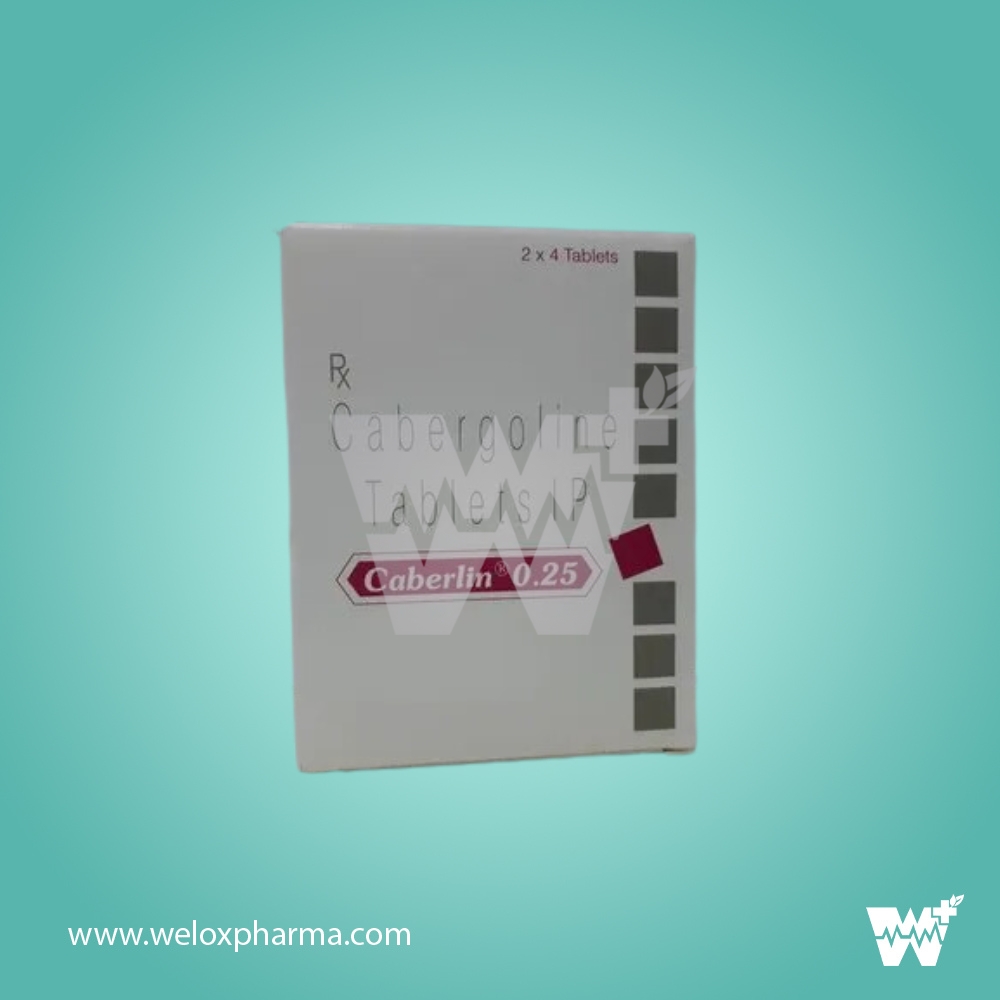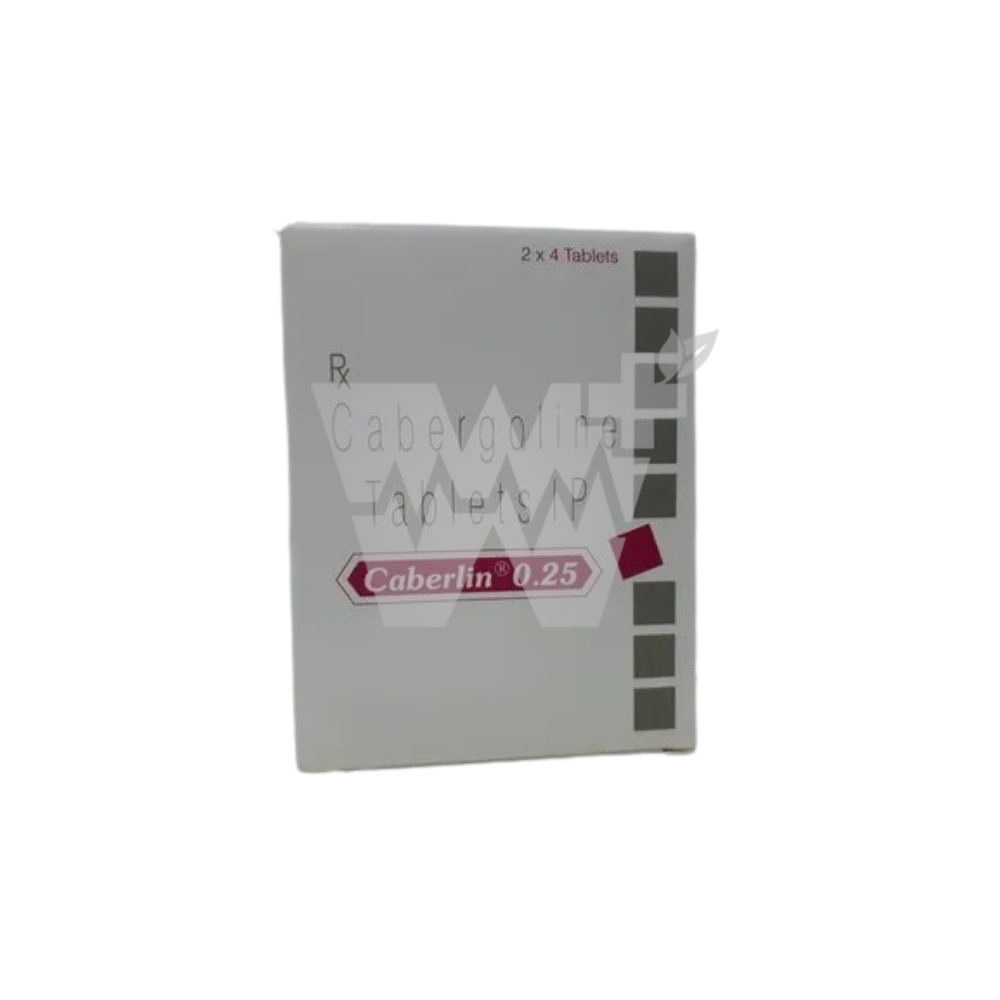



Introduction to Caberlin Cabergoline Tablet 0.25 mg
Caberlin offers a targeted solution for managing high prolactin levels, which can lead to various reproductive and hormonal issues. As a dopamine agonist, Caberlin works by mimicking the action of dopamine, a neurotransmitter that naturally inhibits prolactin release.
Uses of Caberlin Cabergoline Tablet 0.25 mg
Hyperprolactinemia Treatment: Used to lower elevated prolactin levels in conditions like prolactinomas or idiopathic hyperprolactinemia.
Parkinson's Disease Management: Can be used as an adjunct therapy to manage symptoms such as tremors, stiffness, and motor function decline.
Reproductive Health: Helps normalize menstrual cycles and fertility issues related to high prolactin levels in women, and treats hypogonadism in men.
Benefits of Caberlin Cabergoline Tablet 0.25 mg
Effective Prolactin Reduction: Quickly lowers prolactin levels, reducing symptoms and tumor size in prolactinomas.
Improves Reproductive Function: Restores normal menstrual cycles and improves fertility in women affected by hyperprolactinemia.
Well-Tolerated: Generally well-tolerated with fewer gastrointestinal side effects compared to other dopamine agonists.
Convenient Dosing: Requires less frequent dosing, often once or twice weekly, improving patient compliance.
Mechanism of Action of Caberlin Cabergoline Tablet 0.25 mg
Dopamine Agonist: Cabergoline binds to dopamine D2 receptors in the pituitary gland, inhibiting the secretion of prolactin. This action helps regulate prolactin levels and alleviates symptoms associated with excess prolactin.